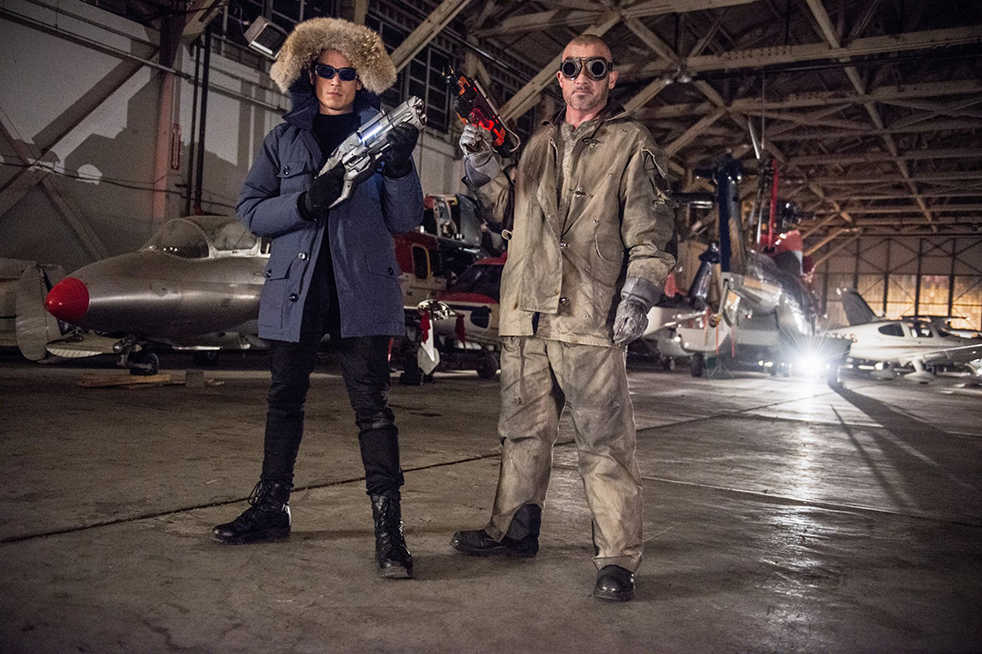On Jan. 21, the CW show “DC’s Legends of Tomorrow” premiered, adding itself to the ever expanding DC television universe alongside “Arrow,” “The Flash” and the cancelled “Constantine.” This newest installment is reminiscent of the Terminator franchise down to the narrators (John and Sara Connor or Arthur Darvill’s Rip Hunter) being humanity’s last hope and its introduction showing the one thing the rest of the plot is trying to avoid. Its introduction reveals what the rest of the plot is trying to avoid. In the first episode, the characters go so far as to nearly repeat Sarah Connor’s mantra verbatim “No fate but what we make.” Despite the writers of this franchise going to great lengths to show that their universe is almost identical to ours (even including Star Wars references) no one in the show seems to notice the Terminator similarity.
The show centers on Rip Hunter (Arthur Darvill, “Doctor Who”), a time traveler from 2166, who comes to 2016 in order to recruit eight individuals in his fight against Vandal Savage (Casper Crump, “Almost Perfect”), an immortal who has successfully taken over the world after attempting to do so for a mere four thousand years. While Hunter explains that he does not wish to destroy his history by changing the past, he also wishes to stop Savage from taking over the world, which implies changing his history and, thus the past, leaving one to hope that Hunter is not the brightest fellow the future has to offer.
The heroes Hunter recruits include both halves of Firestorm, the Atom, formerly dead Sara Lance, and the only two people who can actually kill Savage. Since each of the characters has been in the other DC shows, “Legends of Tomorrow” decided to only show an introduction for Rip Hunter, discouraging new viewers from starting with this series instead of watching “The Flash” or “Arrow” from their beginnings. The lack of introduction, though, was not particularly harmful to the premier episode as it was already overflowing with exposition, and the viewer was mostly concerned with wondering how Hunter could be oblivious and naïve enough to leave two career criminals and a morally ambiguous Lance unwatched in the 70’s.
Hunter’s team of eight, as the time traveler himself conveniently points out, could have been chosen from any point in history so it is quite surprising that he happened to choose eight people who not only lived in the same century, but who know one another. Aside from the show’s creators wishing to tie in with the rest of their DC universe, there is no given reason why Hunter did not simply go find the four most battle-ready incarnations of Hawkgirl and Hawkman for his team of eight since only one of those two can actually destroy Savage.
Odd choice of partners aside, the powers and personalities of the team suggest that the first episode was just a preview of what the show hopes to deliver: action scenes with nifty special effects interspersed with exposition in the form of strained conversations between characters who, for various reasons, do not really like each other.
Near the beginning of the show, it is noted by the time machine’s computer that Hunter prefers to work alone, begging the question as to why he decided on eight people to help him in the first place. This might be answered by simply noting that he only had eight spare chairs in his time machine, which would also explain the death of the tenth person to board, who was never given a lifesaving chair to sit in nor did the plot provide a death-proof need for him to be there, as was the case with Sara Lance.
Of course, with time travel involved, these characters can die or fail as often as the writers would like. As long as Hunter survives, he can just keep going back in time and saving himself and his recruits from making the same mistake. This would make for an interesting show, but would completely defeat the point as viewers know that their success is a certainty from the start.
It would then boil down to an exercise in perseverance and determination. Unfortunately, despite it being made quite apparent that this will not happen, nothing has been provided to explain why the time travelling “hero” does not plan to do so.
Perhaps the most amusing part of this show could easily be written off as an error in math, and therefore not actually amusing at all. At one point, near the end of the first episode, Hunter offhandedly refers to his own time as being nearly a hundred years in the future. This is slightly confusing as 2166 is 150 years in the future, but then again, since they were just in 1975, it is really two centuries away. This is either a nice touch showing how no one, not even a Time Master such as Hunter, can really get used to the idea of time travel, or merely a goof in the script that no one noticed.
In general, stories which involve time travel tend to create giant plot holes that everyone blissfully ignores. Unfortunately, “Legends of Tomorrow” seems to be yet another to fall victim to its own plot. Though there is a chance that future episodes could redeem the show, in its current state, it seems like a failed attempt to profit from the success of other DC shows while off-loading superfluous characters from “The Flash” and “Arrow.” It is, however, nice to know that leather trench coats never go out of style, being perfectly acceptable in 2166 as well as 1975.
